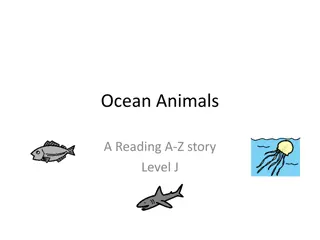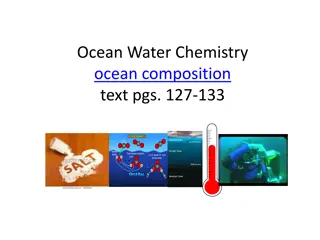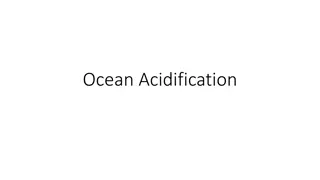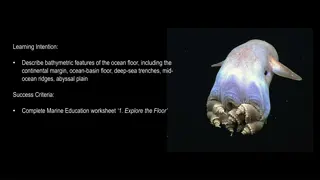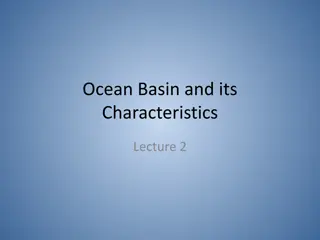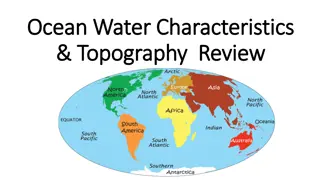Understanding Marine Physics and Ocean Floor Features
Marine Physics is a sub-domain of oceanography focusing on physical conditions and processes in the ocean, including ocean waters' motions and properties. The ocean floor features various elements like the continental shelf, slope, rise, and abyssal plain. Sea mounts, guyots, abyssal hills, and mid-ocean ridges are also key components of the underwater landscape.
Download Presentation

Please find below an Image/Link to download the presentation.
The content on the website is provided AS IS for your information and personal use only. It may not be sold, licensed, or shared on other websites without obtaining consent from the author. Download presentation by click this link. If you encounter any issues during the download, it is possible that the publisher has removed the file from their server.
E N D
Presentation Transcript
Marine Physics Preparation By Instructed Bushra Majeed Issa
What is meaning of Marine Physics? Marine Physics is one of several sub-domains in oceanography and it is the study of physical conditions and physical processes within the ocean, especially the motions and physical properties of ocean waters.
Continental shelf :is the extended perimeter of each continent and associated coastal plain, and was part of the continent during the glacial periods, but interglacial periods. is undersea during Continental slope:the descending slope which connects the sea floor to the Continental shelf. This is still considered to be part of the Continent.
Continental rise: a gentle slope with a generally smooth surface, built up by the shedding of sediments from the continental block, and located between the continental slope and the abyssal plain. Guyot: a guyot also known as a tablemount, is a flat-topped seamount. Their flatness is due to erosion by waves, winds, and atmospheric processes. File:Guyot.jpg
Sea Mount: a seamount is a mountain rising from the ocean seafloor that does not reach to the water's surface (sea level), and thus is not an island. These are typically formed from extinct volcanoes, that rise abruptly.
Abyssal hills: Hills along the ocean floor. Ranging in height and diameter, these hills are much larger than the hills we see on land. 100- 2000 meters high and several KM across. Abyssal plains: are flat or very gently sloping areas of the deep ocean basin floor. They generally lie between the foot of a continental rise and a mid-oceanic ridge.
Mid-Ocean ridge: a mid-ocean ridge is an underwater mountain range, typically having a valley known as a rift running along its spine, formed by plate tectonics. It is usually an oceanic spreading center, which is responsible for seafloor spreading. File:Ridge render.jpg
Trench: the oceanic trenches are hemispheric- scale (one hemisphere to another) long but narrow topographic depressions of the sea floor. They are also the deepest parts of the ocean floor.
Mariana Trench is the deepest part of the world's oceans, and the deepest location on the surface of the Earth's crust. It has a maximum depth of about 10.911meters, or 11 kilometers.
Oceanic Island: one type of oceanic island is found in a volcanic island arc. These islands arise from volcanoes where the subduction of one plate under another is occurring. File:Hawai'i.jpg
Hydrothermal Vents: hot springs which occur in the central rift valley, appearance depends on temperature of water; -Warm-water vents are below 30oC and are clear in color. -White smokers are between 30oC and 350oC and are white in color. -Black smokers are above 350oC and are black in color.
Submarine canyons : V-shaped valleys that run across continental shelves and down continental slopes.




